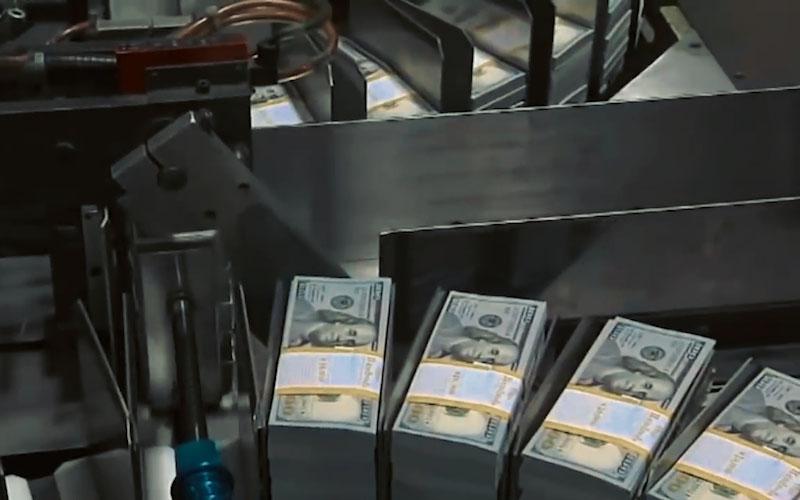Why is the market so insensitive to Trump's tariff news? Uncovering the truth behind the stock market's desensitization
2025-08-14 14:12:16

Trump's "social media magic" and market frenzy
Since Trump returned to the White House, his social media platform, Truth Social, has become a focal point for global investors. Unlike traditional government or corporate announcements, Trump's updates often arrive without warning during trading hours, acting as a ticking time bomb for the market. For example, the S&P 500 surged 11% intraday following the announcement of the tariff deferral on April 9th, "Liberation Day," a typical year's return. This dramatic market reaction has made predicting Trump's next update the most reliable way to make money in 2025, even more effective than chasing trending meme stocks on social media.
After taking office, Trump quickly imposed tariffs on fentanyl-related products exported from Canada, Mexico, and China, subsequently delaying their implementation several times. This led to market volatility becoming a regular occurrence. Data shows that from February to May of this year, the S&P 500's average daily volatility upon the release of major tariff announcements reached 2.8%, roughly seven times its historical average daily volatility. This high-frequency, high-volatility volatility left investors both excited and exhausted, and also laid the groundwork for the market's subsequent desensitization.
Why is the market no longer “dancing to the wind”?
Tariffs become the new normal
On Monday afternoon local time, Trump announced another postponement of high tariffs on China. The market reaction was surprising: instead of narrowing, the stock market's decline widened slightly. Even more surprising, the cost of using options to hedge against stock market volatility fell to its lowest point since 2025 on Tuesday. This stands in stark contrast to the market's intense reaction to the tariff news just a few months prior. What has caused the market to become so numb to Trump's actions?
First, this isn't simply a case of "crying wolf." Despite Trump's erratic tariff policies, many tariff measures have already been implemented. According to the latest data from the Yale Budget Lab, the average US tariff has reached 18.6%, the highest level since 1933. Investors have begun to adapt to this high-tariff environment, punishing some stocks while rewarding others that benefit from tariff protection. However, the overall market remains at historically high levels, with the S&P 500's performance even being considered an unofficial report card on the president's performance.
The “routine” of negotiation strategies
The market's muted reaction may also stem from investors' growing understanding of Trump's strategy. Many have come to view each tariff announcement as an extreme gambit at the negotiating table. Trump himself, upon learning that "TACO" (an abbreviation for tariffs) has become a buzzword, publicly stated that this tactic is intended to gain greater leverage in negotiations. Investors are gradually realizing that Trump's actions are more about testing and maneuvering than final decisions, and are no longer easily led by the nose.
Investor fatigue and economic adaptation
Furthermore, investor fatigue with tariff news is growing. In a sense, the recurring fluctuations in high tariff barriers have become the "new normal" for economic operations. History shows that economies can adapt to trade conditions far worse than the current one. The market is becoming increasingly complacent about alarmist news, which, to some extent, reflects a maturing investor mindset. However, does this calmness hide greater risks?
Undercurrents surge beneath the calm market
Trump's "increase" risk
The market's lukewarm reaction to the tariff news could spur Trump to adopt more aggressive tactics. To regain market attention, he might unveil even more extreme policies. For example, the previously proposed 145% tariff on Chinese goods, if implemented, would virtually freeze Sino-US trade. Such "chief trader"-style risk-taking could catch the market off guard.
The Trap of Overoptimism
More worryingly, the market's calm may be breeding excessive optimism. High valuations, narrow credit spreads, and low implied volatility have combined to foster widespread investor complacency. However, history shows that such optimism often foreshadows a recession. For example, in January of this year, the impressive performance of the Chinese AI model DeepSeek caused global markets to lose over $1 trillion in market value in a single day. Weak labor market data in July further suggests that erratic trade policy and high tariff barriers may be causing hidden economic damage.
Conclusion: Is peace a blessing or a prelude to crisis?
The market's desensitization to Trump's tariff news is both a reflection of investors adapting to the new normal and a harbinger of danger. With high tariffs becoming the norm and investors becoming increasingly familiar with policy dynamics, the market's calm reaction may seem like a sign of maturity. However, overly optimistic sentiment and a market environment with high valuations could trap investors in a misleading feedback loop. Will Trump increase his leverage?
- Risk Warning and Disclaimer
- The market involves risk, and trading may not be suitable for all investors. This article is for reference only and does not constitute personal investment advice, nor does it take into account certain users’ specific investment objectives, financial situation, or other needs. Any investment decisions made based on this information are at your own risk.





















